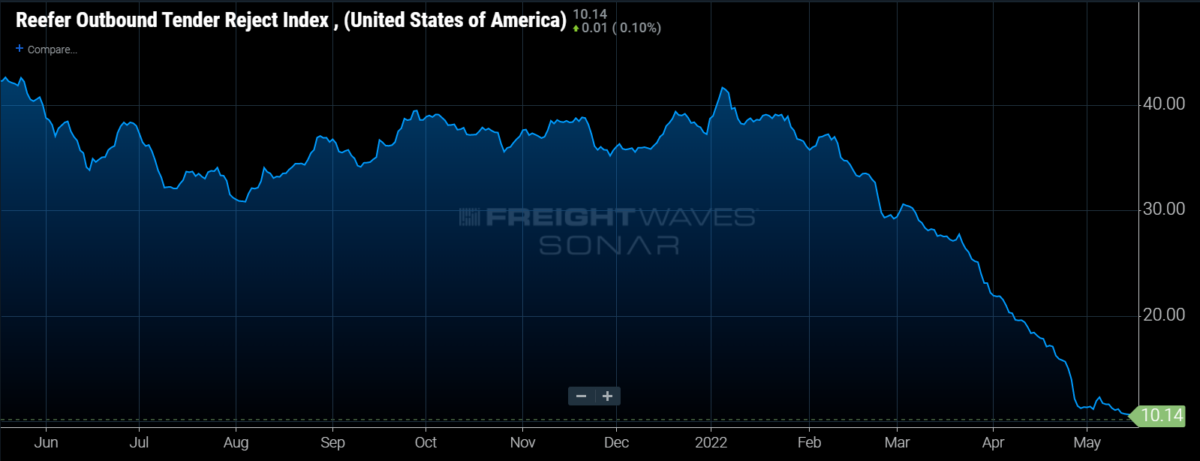Want to meet the world’s growing food needs and possibly take a bite out of inflation at the same time? Try digitizing the supply chain to slash food waste, says Syed Aman, founder and CEO of fresh produce digital freight platform provider Hwy Haul.
With a background in supply chains and distribution at Walmart, Aman saw a lot of food waste and inefficiency in stores and in transportation.
He founded Hwy Haul in 2018 with a mission to eliminate waste in the transportation of food from farms to consumers.
The Santa Clara, California-based company takes a multipronged approach to the issue by:
- Monitoring temperature and humidity.
- Providing complete visibility from start to finish.
- Course-correcting if there is an issue.
- Digitizing the supply chain.
- Providing reliable capacity year-round.
Access to refrigerated truck capacity is a key piece of the puzzle, according to Aman. “Reliability is a question mark” when a broker is working with six to 10 companies, he said. Only 5% to 8% of brokerage work is currently done digitally. That indicates there is ample room for growth in automation.
Hwy Haul digitally matches loads with carriers and can balance shifts in supply and demand. The company works with hundreds of shippers, including multibillion-dollar companies. Aman said it has access to nearly 10% of the nation’s 500,000 refrigerated truck drivers.

While tender rejections in the refrigerated market have been declining in the past few months, Aman said companies nonetheless expect to lose money from rejected loads.
Shippers with large volumes may save 20% to 30% in costs annually working with Hwy Haul. “We have already demonstrated that we have saved food rejections by 80%” in the number of transactions the company has done so far, Aman said.
The incentive for carriers to use Hwy Haul’s platform is they can get paid immediately after uploading a proof-of-delivery photo to the app. Drivers can also book loads directly from the app. Aman said word of mouth among reefer drivers is spreading and bringing more people to Hwy Haul.
Humanitarian and climate impacts of food waste
Up to 40% of food in the U.S. is never eaten, yet one in eight Americans struggles to put food on the table, according to the Natural Resources Defense Council. That amounts to about 400 pounds of food thrown out every year for each person in the U.S.
Waste happens at almost every step of the supply chain. Some food is left in fields; some doesn’t meet industry standards for size, shape or color; some isn’t stored properly during transit or in warehouses; some sits on the shelf too long at grocery stores; and some lingers in consumers’ fridges before being thrown out.
When food rots in landfills, it releases methane, a greenhouse gas that is 25 times more potent than carbon dioxide at trapping heat in the atmosphere, according to the Environmental Protection Agency.
Landfills are the third-largest emitter of methane in the U.S. behind natural gas and petroleum systems and animal agriculture, the EPA said.
Food waste is also a major issue considering the expected rise in population in the coming decades. Aman said the world will need 60% more food by 2050 to feed the population. “One way is to produce more food, but that is like fixing a symptom, not the root cause. We need to get to the root cause.”
How distance traveled impacts food waste
Produce in the U.S. typically travels long distances and spends about half of its life on trucks, Aman said.
“As we shrink the distance [food travels], the chances of getting it spoiled are reduced,” he said. Consumers are starting to demand more food that was produced closer to home from places such as vertical farms or community gardens.
Read: Want your own farm? This one comes in a shipping container
But Aman stressed that produce needs to be handled well and kept at the right temperature regardless of the distance traveled.
While he was at Walmart, Aman worked on a last-mile delivery platform to deliver goods within 60 minutes after they were ordered. He learned that even traveling short distances of 5 miles or less requires careful handling, especially for very temperature-sensitive foods such as milk and ice cream.
Every hop along the supply chain “adds a dollar value to the price of the produce,” and consumers are often stuck with that tab, Aman said.
Rising food prices, shortages of things like baby formula and worries about global food shortages are all impacted by global and local triggers.
In April, $240 million in produce was left rotting in trucks at the U.S.-Mexico border while drivers waited in long lines due to increased inspections before passing through. Whether it is a pandemic, a war, climate change or another issue, food supply chains are likely to face continuing challenges.
“We need to build a more resilient supply chain to tackle this,” Aman said. “The supply chains of the future need to be reimagined and reconstructed.”
Click here for more FreightWaves articles by Alyssa Sporrer.
Related Stories:
$240M in produce losses blamed on truck delays at US-Mexico border
Shipwell: Reducing food waste one on-time shipment at a time
Driving out supply chain inefficiencies key to eliminating food waste
The Log Book: Lineage Logistics launches nonprofit to reduce food waste
